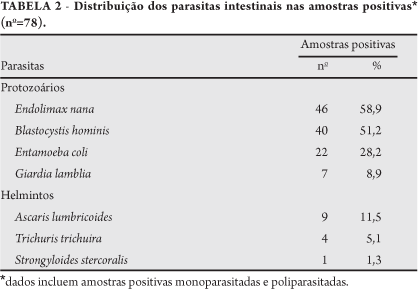INTRODUCTION: The present study was carried out from March to May 2008, with the aim of evaluating the effectiveness of different techniques for diagnosing Blastocystis hominis in a sample of the population attended at the Biomedicine Laboratory of Feevale University, Novo Hamburgo, Rio Grande do Sul. METHODS: On hundred feces samples from children and adults were evaluated. After collection, the samples were subjected to the techniques of spontaneous sedimentation (HPJ), sedimentation in formalin-ether (Ritchie) and staining by means of Gram and May-Grünwald-Giemsa (MGG). RESULTS: The presence of Blastocystis hominis was observed in 40 samples, when staining techniques were used (MGG and Gram), while sedimentation techniques were less efficient (32 positive samples using the Ritchie technique and 20 positive samples using the HPJ technique). CONCLUSIONS: Our results demonstrate that HPJ was less efficient than the other methods, thus indicating the need to include laboratory techniques that enable parasite identification on a routine basis.
Blastocystis hominis; Intestinal parasites; Diagnosis; Staining techniques




